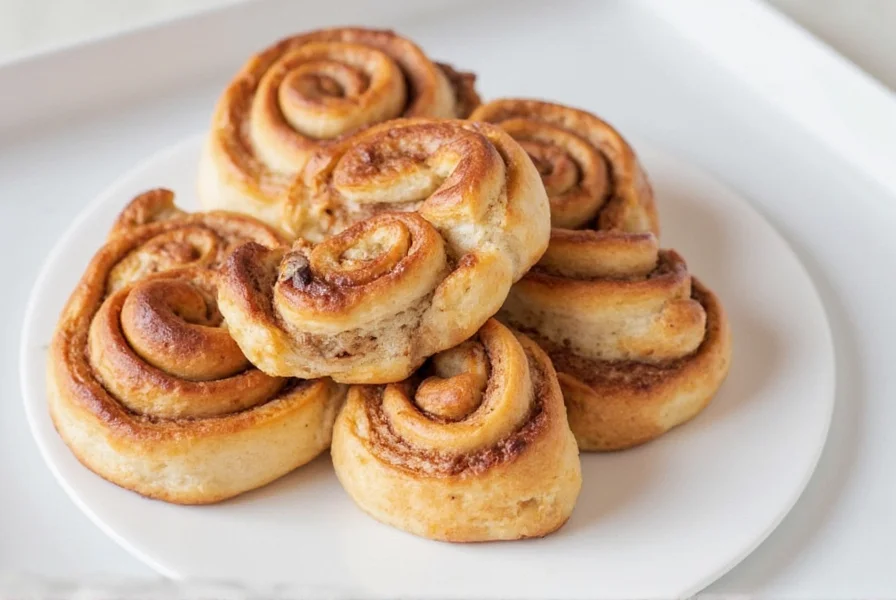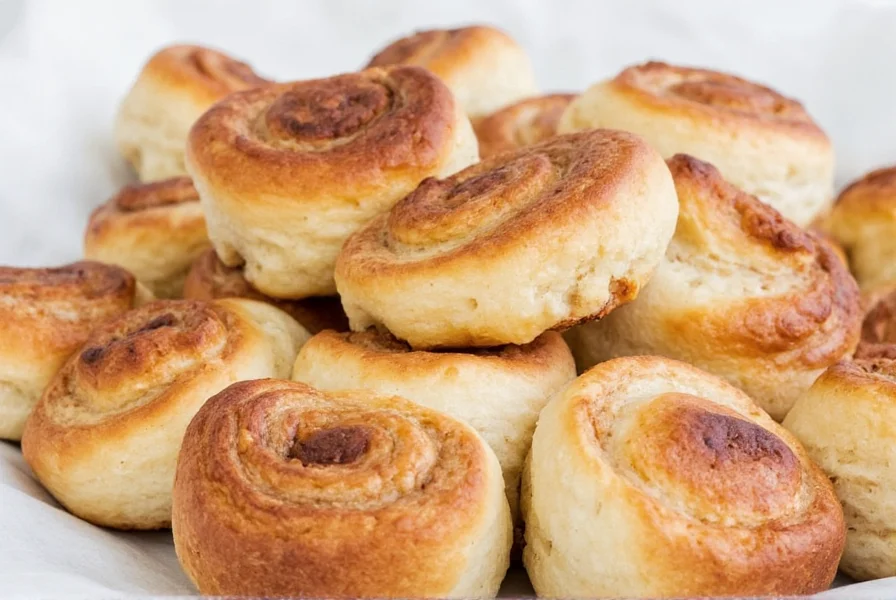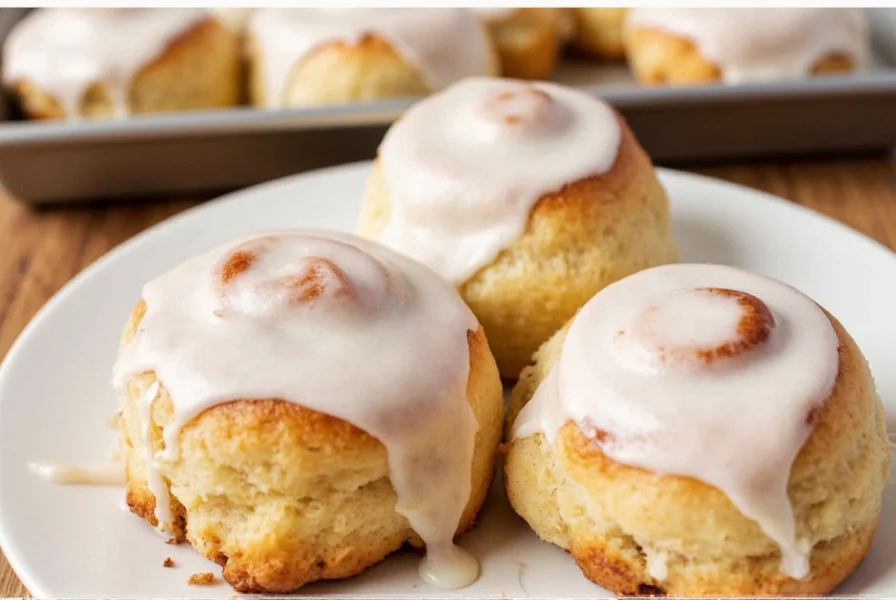Dairy-free cinnamon rolls have become increasingly popular among those with lactose intolerance, dairy allergies, or plant-based diets. The good news is that with the right substitutions and techniques, you can create soft, fluffy, and flavorful cinnamon rolls without any dairy products. Many bakers find they can't even tell the difference between traditional and dairy-free versions when prepared correctly.
Understanding Dairy Substitutes for Cinnamon Rolls
Creating perfect dairy-free cinnamon rolls starts with understanding which substitutes work best for each dairy component. Not all plant-based alternatives behave the same way in yeast doughs, so choosing wisely is crucial for success.
| Dairy Ingredient | Best Substitute | Why It Works | Ratio |
|---|---|---|---|
| Milk | Full-fat coconut milk or oat milk | Provides richness and helps with browning | 1:1 replacement |
| Butter | Vegan butter (Miyoko's or Melt) or refined coconut oil | Creates flaky layers without dairy flavor | 1:1 replacement |
| Cream Cheese (for frosting) | Vegan cream cheese (Kite Hill or Miyoko's) | Closest texture and tangy flavor profile | 1:1 replacement |
Why Some Dairy-Free Cinnamon Rolls Fail
Many home bakers encounter issues when first attempting dairy-free cinnamon rolls. The most common problems include dense texture, poor rising, and lack of flavor complexity. These issues typically stem from:
- Using watery plant milks that don't provide enough fat content
- Choosing coconut oil with strong coconut flavor that overpowers cinnamon
- Not adjusting yeast activation process for dairy-free liquids
- Overcompensating with additional flour when dough feels sticky
Understanding these pitfalls is the first step toward creating perfect dairy-free cinnamon rolls every time.
Perfect Dairy-Free Cinnamon Rolls Recipe
This tested recipe produces soft, fluffy rolls with that signature swirl and rich cinnamon flavor—completely dairy-free.
Ingredients
Dough:
- 1 cup full-fat coconut milk, warmed to 110°F (375ml)
- 2 ¼ tsp active dry yeast (1 packet)
- ⅓ cup maple syrup or sugar
- ⅓ cup vegan butter, melted
- 1 tsp salt
- 3 ½ cups all-purpose flour (plus more as needed)
Filling:
- ⅓ cup vegan butter, softened
- ½ cup coconut sugar
- 2 tbsp ground cinnamon
- 1 tsp vanilla extract
Frosting:
- 4 oz vegan cream cheese, softened
- 2 tbsp vegan butter, softened
- 1 ½ cups powdered sugar
- 1 tsp vanilla extract
- 1-2 tbsp non-dairy milk
Step-by-Step Instructions
- Activate the yeast: Warm coconut milk to 110°F, add maple syrup and yeast. Let sit 5-10 minutes until foamy.
- Make the dough: Mix yeast mixture, melted vegan butter, and salt into flour. Knead 5-7 minutes until smooth and elastic. The dough should be slightly tacky but not overly sticky.
- First rise: Place dough in oiled bowl, cover, and let rise in warm place for 1-1.5 hours until doubled.
- Prepare filling: Mix coconut sugar and cinnamon. Spread softened vegan butter over rolled dough, then sprinkle with sugar mixture.
- Roll and cut: Roll dough tightly into log, cut into 12 equal pieces using dental floss for clean cuts.
- Second rise: Place rolls in greased pan, cover, and let rise 30-45 minutes until puffy.
- Bake: Bake at 350°F (175°C) for 22-25 minutes until golden brown.
- Make frosting: Beat vegan cream cheese and butter until smooth, add powdered sugar and vanilla, thin with non-dairy milk as needed.

Troubleshooting Dairy-Free Cinnamon Roll Problems
Even with the best recipe, issues can arise. Here's how to fix common problems when making dairy free cinnamon rolls from scratch:
Dense or Heavy Rolls
Cause: Over-flouring the dough or using low-fat plant milks
Solution: Measure flour properly (spoon and level), use full-fat coconut milk, and don't add extra flour unless absolutely necessary. The dough should be slightly sticky but still manageable.
Poor Rising
Cause: Yeast killed by liquid that's too hot or cold
Solution: Always test liquid temperature with a thermometer (105-115°F is ideal). For dairy-free versions, coconut milk sometimes contains stabilizers that can affect yeast—opt for brands with minimal ingredients.
Dry Texture
Cause: Using refined coconut oil instead of vegan butter
Solution: Vegan butter contains water that helps create steam during baking, resulting in softer rolls. If using coconut oil, add 1-2 tablespoons extra non-dairy milk to the dough.

Advanced Tips for Exceptional Dairy-Free Cinnamon Rolls
- Overnight option: After shaping rolls, cover and refrigerate overnight. The slow fermentation develops more complex flavors.
- Flavor boost: Add ¼ tsp cardamom to the filling for a bakery-style depth that complements the cinnamon.
- Texture secret: Brush baked rolls with melted vegan butter before frosting to create a moisture barrier that prevents sogginess.
- Gluten-free adaptation: For gluten free dairy free cinnamon rolls, use a quality 1:1 gluten-free flour blend and add 1 tsp xanthan gum to the dough.
Storing and Reheating Dairy-Free Cinnamon Rolls
Proper storage maintains the quality of your dairy-free cinnamon rolls:
- Room temperature: Store covered for up to 2 days
- Refrigerator: Keep in airtight container for up to 5 days
- Freezer: Wrap individual rolls in plastic wrap, then place in freezer bag for up to 3 months
For best reheating results, microwave for 15-20 seconds or warm in a 300°F oven for 5-7 minutes. Adding a damp paper towel when microwaving prevents drying out.
Frequently Asked Questions
Can I make dairy-free cinnamon rolls without yeast?
Yes, you can create yeast-free dairy-free cinnamon rolls using baking powder and baking soda as leaveners. However, the texture will be more like a sweet biscuit than traditional yeast-raised rolls. For authentic texture, yeast is recommended, but quick versions work well with 2 cups flour, 1 tbsp baking powder, ½ tsp baking soda, and 1 cup buttermilk substitute (1 cup almond milk + 1 tbsp lemon juice).
Why do my dairy-free cinnamon rolls collapse after baking?
This typically happens when the rolls are underbaked or removed from the oven too soon. Dairy-free doughs often need the full baking time (22-25 minutes) to set properly. Check for doneness by inserting a thermometer into the center—it should read 190°F. Also ensure your oven temperature is accurate with an oven thermometer.
What's the best non-dairy milk for cinnamon roll dough?
Full-fat coconut milk provides the best results for dairy free cinnamon roll dough due to its fat content and neutral flavor when refined. Oat milk is a close second choice as it has natural sweetness and good fat content. Avoid almond milk unless it's the barista or extra creamy variety, as regular almond milk is too watery for optimal dough texture.
How can I make my dairy-free cinnamon rolls more flavorful?
Enhance flavor in dairy-free cinnamon rolls by toasting your coconut sugar before mixing with cinnamon, adding a pinch of cardamom to the filling, using dark brown sugar instead of coconut sugar, or incorporating orange zest into the dough. For deeper flavor, let the shaped rolls undergo a slow overnight rise in the refrigerator before baking.
Can I use coconut oil instead of vegan butter in dairy-free cinnamon rolls?
Yes, but with caveats. Refined coconut oil works best as it lacks coconut flavor. However, vegan butter generally produces superior results because it contains water that creates steam during baking, resulting in flakier layers. If using coconut oil, add 1-2 tablespoons extra non-dairy milk to the dough to compensate for the lack of water content in the fat.











 浙公网安备
33010002000092号
浙公网安备
33010002000092号 浙B2-20120091-4
浙B2-20120091-4